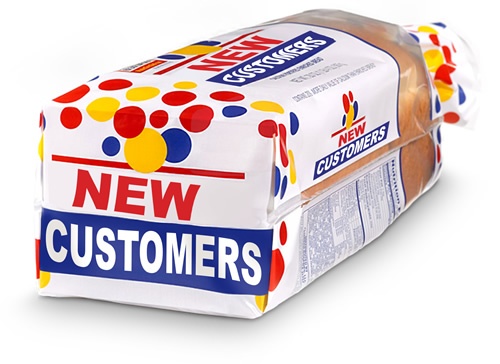As most small and mid-market companies feverishly attempt to grow and create valuable businesses, there is often a pronounced effort on customer acquisition – new customers. But, not necessarily on customer retention for existing customers or marketing to employees – our internal customers.
These two other very important customer bases are arguably as important if not more so than new customers, but are often overlooked as companies equate revenue, growth, and profitability with customer acquisition.
If one stops to think about the value of the internal customer – the employee – it becomes very clear that your brand starts and ends with the team. So, if you are not treating your employees like a customer audience worthy of being informed, educated, and motivated, that is a big miss.
Secondly, your existing customers – the ones on whom you have spent significant time, money, and effort winning are the other most valuable customer base.
So, the two big questions are:
- Do you have an overall Customer Strategy?
- Are you thinking about Customer Retention?
- And what about the Internal Customer?
Point of Clarity Around the Term “Strategy”
Strategy is a misunderstood term because its meaning is often inferred differently depending on the context in which it is used. In this article, strategy is referred to as the “what” between a Goal or Objective and the Tactics.
Business owners and executive management usually have well-defined goals, but they often jump straight to the tactics to meet those goals. Without a strategy – the bridge between the Goals and Tactics that defines “what” is going to be done – it is very difficult to message cohesively, differentiate the brand, or add value to the customer, among myriad other things. For example, if I want to build a house and you are a carpenter, you could start framing-up the house right away but the “what” is missing: the blueprint, which shows “what” type of house we are building (ranch, two-story, etc.).
Your Employees Are Your Most Important Customer

It is interesting that seemingly many businesses do not “market” to their own employees. I am sure many of us have been employed by companies that effectively kept us in the dark regarding plans, goals, projects, etc. But doesn’t it make all the sense in the world for employees to be our best-informed customers? Our best brand advocates? And to be motivated by the company’s plans and efforts? Just as we should have customer acquisition and customer retention strategies, so should we have an employee marketing strategy.
Brands start on the inside and who and what the brand stands for is reflected to Prospects and Customers. Culture is a hot topic because culture and brand are intertwined; and employees (particularly, younger employees) want to work for companies that include them. How many times have you been part of a “team,” only to be surprised when a new marketing campaign dropped, plans for a new product launch were unveiled, or a new initiative was announced that was already in the works?
Any valuable relationship begins with trust, respect, and reciprocity; it’s no different with customer relationships, and certainly internal customers. Imagine, if you do not do this at your company already, that a new product is launching or a new marketing campaign is dropping; and imagine that the employees were the first audience to hear about it, followed by customers and prospects. Who better to be excited? Who better to promote and articulate features, benefits, and solutions; or provide insights and feedback based on intimately knowing external customers?
Employees are obviously critical to the success of any business; and myriad statistics show that employees who feel valued are happier, more engaged, better brand advocates, add greater value, and the list goes on. Your team truly is the brand; therefore, they should be the brand’s greatest fans and the most valued customers of all because they are the most important customer of all. Sure, there are always some team members who may seem like anything but a brand fan; but think if you lost your best employees – the time, cost, and pain to the organization. Treating employees like customers impacts their attitude, motivation, performance, and value to the organization, which in turn affect employee engagement and retention.
Employees are the “face” of the brand – literally and figuratively. But, it’s not just the obvious customer-facing personnel like Sales and Customer Support; all team members are brand advocates and poster-children of the brand. Most people are proud of where they work…or would like to feel that way. Being “forgotten” when you are doing your job every day is a drag; it is safe to say that many people want to feel part of something bigger and something in which they play a significant role. Everybody matters. Every employee should know how their role and performance affects the rest of the organization. Why wouldn’t we treat every team member as the important internal customer they certainly are?
It is difficult to be focused and intentional without knowing “what” you should do to market to internal customers. Ascertaining that employees are a different type of customer is the first step. Your internal customer base needs a strategy.
Existing Customers are Your Second Most Important Customers

For many businesses, a growing and healthy customer base is essential to profitability if not sheer survival. If your company is like the great majority of small to mid-size firms, the bulk of your marketing and sales efforts are likely focused on new customers. But, unless you’re selling cemetery plots or some other once-in-a-lifetime product or service, chances are good that you have customers from whom you can earn more business…or testimonials…or referrals. Hence, the need for a customer retention strategy.
Growing existing customer relationships is often overlooked for new business for a variety of reasons. First, there is the shiny new object syndrome – new customers are exciting as is the thrill of the chase; new customers represent hope and optimism through potentially bigger and better deals; and the perceived status of the company might be elevated due to landing that esteemed new client, among many others. And let’s be honest: new customers don’t have a history with us, so it is nice being regarded as the new and shiny solution versus the vendor who may have stumbled a time or two in the past.
Assuming an existing customer base has some untapped additional value, the truth is that it is very difficult to maintain and grow relationships while creating ongoing value. Customer retention requires a strategy…figuring out “what” you can do to grow those relationships requires a concerted effort, but the potential rewards are enormous. Countless customer retention stats support the fact that existing customers are often more profitable, less price sensitive, require less service, and a great source of referrals and valuable marketing information.
Knowing Your Numbers for Customer Retention
You likely know off the top of your head the amount of money your company spends on sales, marketing, support, etc. Yet, many companies do not know the “true” cost of acquiring a new customer. If you don’t know your Customer Acquisition Cost (CAC) and have access to the numbers, it is a very worthwhile exercise, because most are shocked to learn the true cost. The new customer hunt quickly loses its luster when the real acquisition costs are revealed.
Customer Acquisition Cost is only one side of the coin; Customer Lifetime Value (CLV) is the other, which is at the heart of a customer retention strategy. There are various ways to calculate CLV, but basically, it is the value or worth of a customer over their lifetime of doing business with you minus the initial acquisition and ongoing service costs. Again, many companies have difficulty accessing the historical data to come up with these values, but it too is a very worthwhile exercise. If you take a “good” customer and compare their “value” against a new customer, you might be surprised. Sure, that new customer could become that “good” existing customer; but can the good customer that you already have become a better customer, and how many current customers could become better or even great at less cost, less effort, in less time, and at more profit, growth and value to the company?
A significant piece of customer retention strategy is around customer churn – losing existing customers. Sometimes, we get so caught-up in pursuing new customers that we don’t notice when current customers are falling out of the bottom of the bucket. Customer churn is a serious Achilles heel to a business and compounds the issues of leveraging costs, maximizing opportunities, and organizational efficiencies.
It is important to recognize where churn is more pronounced in your customer base. Are new customers churning faster than older customers perhaps never realizing the full value of your product or service? Or are older customers churning faster than new perhaps indicating lack of focus on customer retention efforts and Customer Experience?
New Customers Are Essential, but Not at the Expense of Employee Marketing and Customer Retention

Think about your new customer efforts versus your other two customer bases; is it lopsided? Is the growth of the company pinned to scoring new business at the exclusion of potentially easier and more profitable business? Examine your customer bases – talk to your sales reps, customer support, and others who interface with customers daily. Are you sacrificing building loyal customers who are incredibly valuable over their lifetime of doing business with you? Customer acquisition requires significant time and resources – both human and financial – making it difficult to have a solid new business strategy AND a customer retention strategy. But, that is what “should” happen. Indeed, each of the three customer bases deserves its own strategy within the overall Customer Strategy.
Nobody is arguing whether new business is vitally important; it certainly is. But, one must consider the true cost of customer acquisition as well as the cost to the organization in terms of its resources. If possible, thoroughly examine CAC and CLV; knowing these numbers can be a game changer in:
- the prospective new accounts that your company pursues
- how much your company should spend to acquire a new customer
- how much value you should expect to get over time based on the customer acquisition costs
The Goal of New Customers Should be Part of Your Customer Retention Strategy
Let’s face it, there are so many great products and services from so many companies, that the new “product” really is Customer Experience. It is difficult to differentiate on features and benefits alone; but, how we nurture Prospects into Customers, and Customers into loyal brand advocates exemplifies differentiation, but requires intention and strategy.
Given the amount of time, effort, and resources expended on acquiring new customers, it only makes sense to get very serious about the Customer Experience. But, the Customer Experience begins before someone even becomes a Prospect. So, is every interaction and process with your company an easy, pleasant, and value-added experience from the beginning? And when a Prospect becomes a Customer, then what? Is there a plan or onboarding process to solidify that Experience into something that benefits the Customer and your Company? Is the new Customer positioned to become a great and profitable customer, referral source, and brand advocate…and make repeat purchases throughout their lifetime of doing business with your company?
A Customer Strategy Customer Acquisition, Customer Retention, and Employee Marketing
Let us assume that you agree that Employees, Existing Customers, and New Customers are vitally important in building growth and adding value to your business. And let us also assume that your primary focus has been on acquiring new customers. If that is working for you, great. But, if there is growth, value, profitability, and brand-building still to be had, how can any of that occur if there is not an overall Customer Strategy that comprises a strategy for each of these important customer bases?
Marketing 101 tells us that the target audience is paramount; if we cannot reach our target audience and deliver a message that resonates with them, we are in for a world of hurt. Marketing 101 also tells us that segmenting target audiences is essential because prospects and customers are made-up of disparate personas comprising different demographics, behavior, and so on.
Are we going to message Existing Customers in the same way that we message Prospects? Are we going to talk to valued Employees in the same voice, tone, and attitude that we would Prospects or Current Customers? Of course, not…or at least, we should not. Each customer base is different with unique challenges, opportunities, motivations, needs, and wants. Therefore, each Customer Base requires a different strategy.

Sticky Thoughts as Take-Aways for Your Customer Strategy
Does your company:
- Have an overall Customer Strategy? If Customer Experience is the new “product,” are you focused and intentional on that experience?
- Regard employees as “workers” or as team members who are the brand? The most important people are sitting right next to us.
- Have a customer retention plan for current customers? Keeping and growing customers is smart but difficult; customers don’t want to leave but they will in a heartbeat without saying anything. Don’t take them for granted.
- Have an on-boarding process for new customers? Growing those new relationships is important, but requires a strategy.
Want to learn more?
Check out the complimentary Customer Strategy Course in Strategic Glue University.
Check out the e-books on Customer Acquisition and Customer Retention in Strategic Glue University.
Comments? Please feel free to leave comments!

